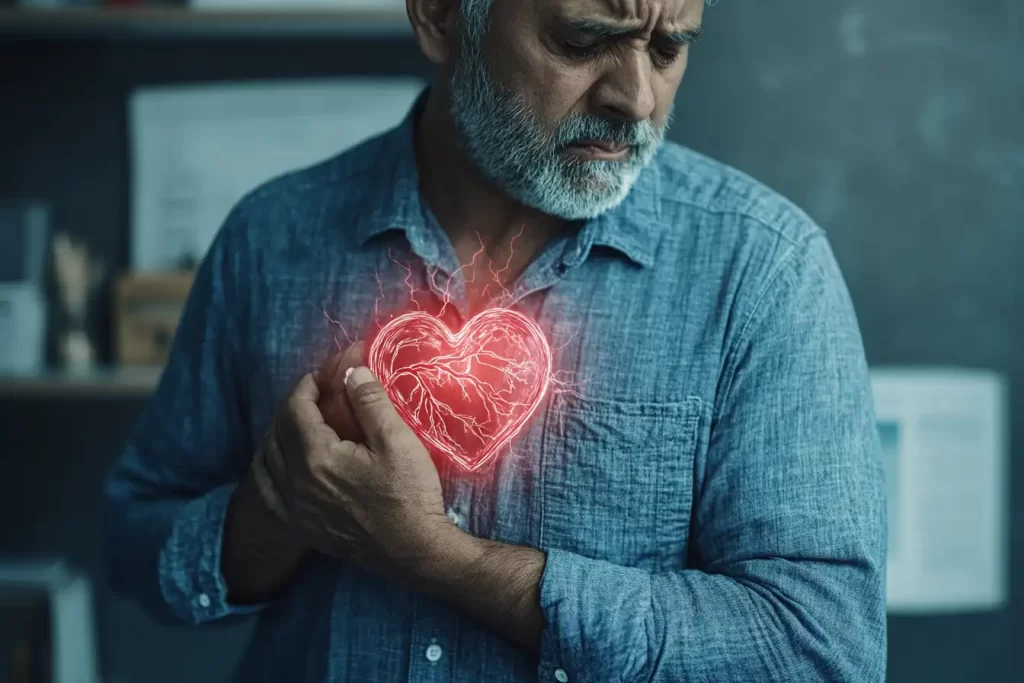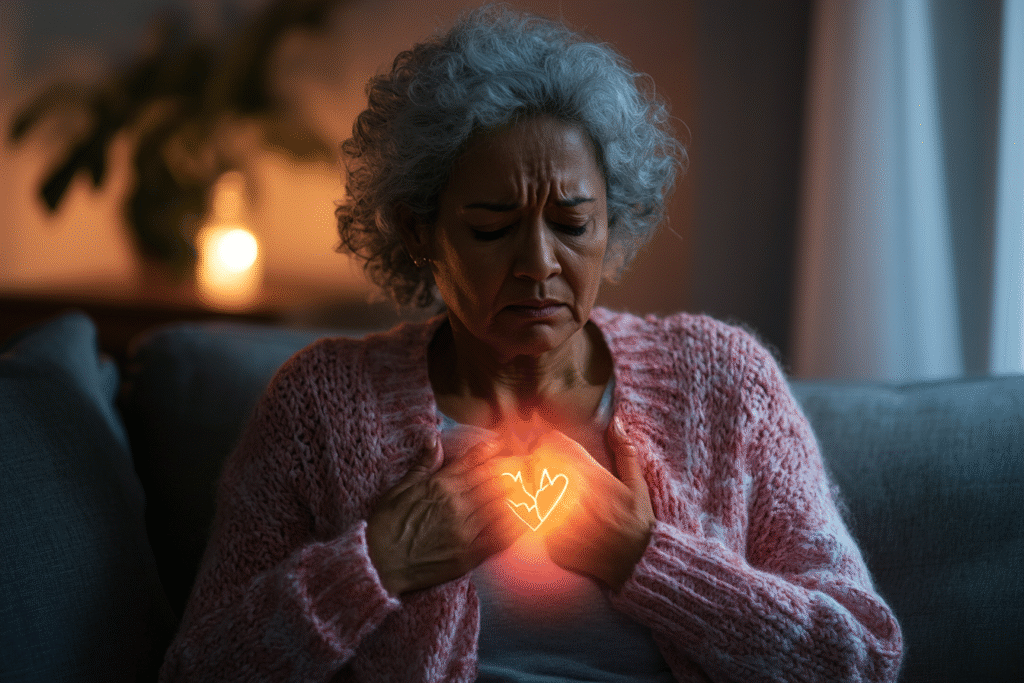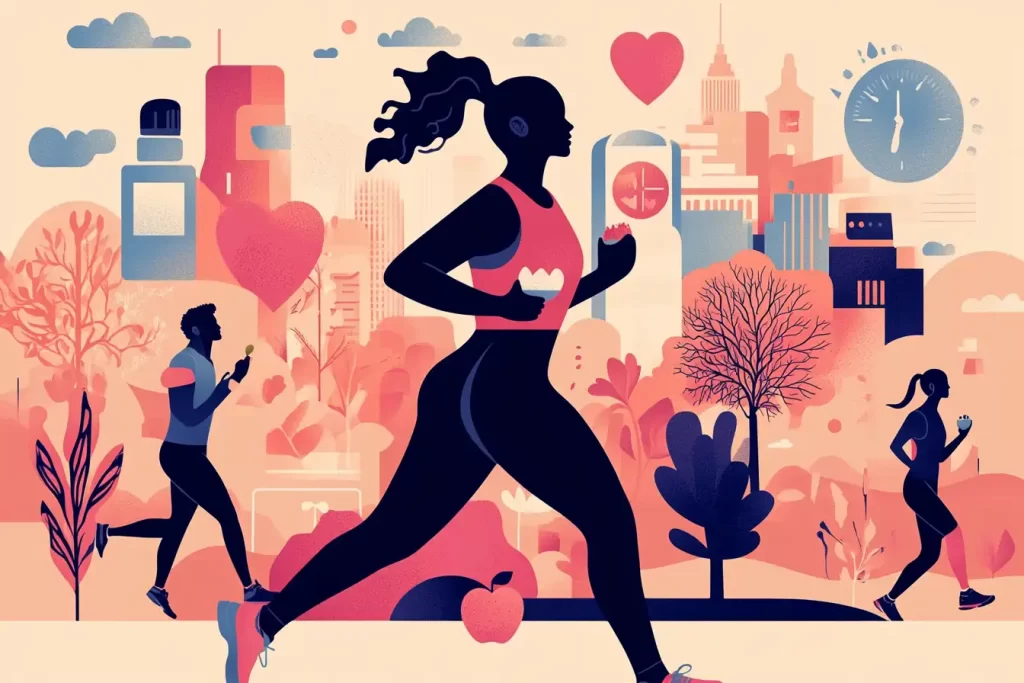Heart attacks are a leading cause of death worldwide, but did you know that the symptoms can differ significantly between men and women? Understanding these differences is crucial for early detection and timely treatment. In this guide, we’ll explore can heart attack symptoms vary by gender, the key differences in symptoms, and why recognizing these signs could save a life.
What is a Heart Attack?
A heart attack, medically known as a myocardial infarction, happens when the blood supply to the heart is suddenly cut off. This blockage is usually caused by a buildup of fatty deposits, or plaque, in the coronary arteries—the vessels responsible for delivering oxygen-rich blood to the heart muscle. When blood flow is restricted, the heart muscle begins to suffer damage and can start to die within minutes. This is why immediate medical intervention is absolutely critical to prevent long-term harm or even death.
But here’s something many people don’t realize: heart attack symptoms aren’t the same for everyone. In fact, they can vary significantly depending on gender, and these differences are frequently overlooked or misunderstood. While men often experience more “classic” symptoms, women may have subtler or entirely different warning signs. This variation makes it essential to understand how heart attack symptoms can differ between men and women, as recognizing these signs early could be the difference between life and death.

Common Heart Attack Symptoms in Men
When it comes to heart attacks, men often exhibit what are considered the “classic” symptoms—those most commonly associated with this life-threatening event. These signs are typically more pronounced and easier to recognize, but that doesn’t make them any less urgent. Here’s what men commonly experience during a heart attack:
- Chest pain or discomfort: This is the most recognizable symptom. Men often describe it as a feeling of pressure, tightness, or a heavy weight pressing down on their chest. Some compare it to an “elephant sitting on their chest.”
- Pain radiating to the arm, shoulder, or jaw: A hallmark sign in men, this pain often starts in the chest and spreads to the left arm, though it can also affect the right arm, shoulders, neck, or jaw. This radiating pain is a key indicator that something is seriously wrong.
- Shortness of breath: Even without noticeable chest pain, men may struggle to catch their breath, feeling as though they can’t get enough air, even while resting.
- Cold sweats and nausea: Many men break out in a cold sweat or feel suddenly nauseous, sometimes even vomiting. These symptoms often accompany chest pain and can be mistaken for the flu or indigestion.
While these symptoms are well-documented and widely recognized, it’s crucial to remember that heart attack symptoms can vary by gender. Women, for instance, may experience entirely different or more subtle signs, which are often overlooked. This stark contrast highlights the importance of understanding how heart attacks can present differently depending on who is affected—knowledge that could save lives.
Common Heart Attack Symptoms in Women
Heart attacks in women often present differently than in men, and these differences can be both subtle and misleading. Unlike the “classic” symptoms men typically experience, women are more likely to have what are often described as “atypical” symptoms. These signs can be easily overlooked or mistaken for less serious conditions, leading to misdiagnosis or dangerous delays in treatment. Here are the most common heart attack symptoms women should be aware of:
- Fatigue: One of the most frequently reported symptoms in women is an overwhelming sense of exhaustion. This isn’t just everyday tiredness—it’s an unusual, extreme fatigue that doesn’t improve with rest and is often brushed off as stress or overexertion.
- Nausea or vomiting: Women may experience stomach discomfort, nausea, or even vomiting during a heart attack. These symptoms are often mistaken for indigestion, the flu, or a stomach bug, especially when chest pain is absent.
- Jaw, neck, or back pain: Unlike men, who often feel pain radiating to their arm or shoulder, women are more likely to experience sharp, unexplained pain in their jaw, neck, or upper back. This pain can come on suddenly and may be mistaken for a muscle strain or dental issue.
- Shortness of breath: Difficulty breathing, even without chest pain, is a common symptom in women. It may feel like you can’t catch your breath, even when you’re not exerting yourself.
- Dizziness or lightheadedness: Feeling faint, unsteady, or like you might pass out is another warning sign. This symptom is often overlooked but can be a critical indicator of a heart attack in women.
These differences in symptoms highlight a crucial point: heart attacks don’t always look the same in women as they do in men. Unfortunately, because women’s symptoms are often subtler or less recognized, they are at a higher risk of delayed diagnosis and treatment. This makes it all the more important for women—and those who care for them—to be aware of these signs and take them seriously. be life-saving.

Why Do Heart Attack Symptoms Vary by Gender?
The way heart attack symptoms present in men versus women isn’t random—it’s deeply rooted in biological, hormonal, and physiological differences. These variations explain why women often experience subtler or entirely different symptoms compared to men. Here’s a closer look at the key factors behind these gender-based differences:
- Biological Differences in Anatomy
Women generally have smaller coronary arteries than men. This structural difference can influence how symptoms manifest. For example, blockages in smaller arteries may not cause the same intense chest pain that men often report. Instead, women may experience more diffuse symptoms, such as fatigue, nausea, or discomfort in other areas like the jaw or back. - Hormonal Factors
Estrogen, a hormone more prevalent in women, plays a protective role in heart health during their reproductive years. It helps keep blood vessels flexible and promotes healthy blood flow. However, after menopause, estrogen levels drop significantly, increasing the risk of heart disease. This hormonal shift can also alter how heart attack symptoms present, making them less obvious or more easily mistaken for other conditions. - Patterns of Plaque Build-Up
Men and women tend to develop different types of blockages in their arteries. Men are more likely to have plaque buildup in major arteries, leading to the classic symptoms of chest pain and pressure. In contrast, women are more prone to microvascular disease, which affects the smaller blood vessels. This condition can cause symptoms like fatigue, shortness of breath, or discomfort in areas other than the chest, making it harder to recognize as a heart attack. - Differences in Pain Perception
Research suggests that men and women may perceive pain differently due to variations in brain chemistry and nerve pathways. This could explain why women often describe their symptoms as vague or atypical, while men are more likely to report sharp, localized pain.
Understanding these factors is crucial because it underscores a vital truth: heart attack symptoms can vary by gender. Recognizing these differences isn’t just about medical knowledge—it’s about saving lives. Women, in particular, are at a higher risk of having their symptoms dismissed or misdiagnosed, which can delay critical treatment. By raising awareness of these gender-specific variations, we can empower both men and women to recognize the warning signs and seek help sooner.

Misconceptions About Heart Attack Symptoms
When it comes to heart attacks, there’s a lot of misinformation that can cloud our understanding—and even put lives at risk. One of the most pervasive myths is that heart attacks always involve severe chest pain. While this may be true for some, it’s far from the whole story. Let’s debunk some of the most common misconceptions and set the record straight:
Myth 1: Only Men Have Chest Pain During a Heart Attack
Fact: While chest pain is a hallmark symptom for many men, women can experience it too—but it often presents differently. For women, chest pain may feel like pressure, tightness, or even a burning sensation rather than the intense, crushing pain men often describe. What’s more, women are more likely to have chest pain accompanied by other symptoms, such as fatigue, nausea, or shortness of breath. Assuming that chest pain is a “male-only” symptom can lead to dangerous delays in seeking help for women.
Myth 2: Heart Attack Symptoms Are the Same for Everyone
Fact: Heart attack symptoms are not one-size-fits-all. As we’ve seen, heart attack symptoms can vary by gender, with women often experiencing subtler or entirely different signs than men. But it goes even deeper than that—symptoms can also vary by individual. Factors like age, overall health, and even genetics can influence how a heart attack manifests. For some, it might be sudden and unmistakable; for others, it could be a slow buildup of vague, easily dismissed symptoms.
Myth 3: If You’re Young or Healthy, You Don’t Need to Worry About Heart Attacks
Fact: Heart attacks can happen to anyone, regardless of age or fitness level. While older adults and those with risk factors like high blood pressure or diabetes are at higher risk, young and seemingly healthy individuals can also experience heart attacks. Ignoring symptoms because you think you’re “too young” or “too healthy” can have devastating consequences.
Myth 4: Heart Attacks Always Happen Suddenly and Intensely
Fact: While some heart attacks strike without warning, many begin with mild symptoms that come and go over hours, days, or even weeks. This is especially true for women, who may experience fatigue, dizziness, or mild discomfort that they brush off as stress or overexertion. Recognizing these early warning signs is critical for preventing a full-blown heart attack.
Why Dispelling These Myths Matters
Misconceptions about heart attack symptoms aren’t just harmless misunderstandings—they can be deadly. When people don’t recognize the signs of a heart attack, they delay seeking help, which reduces the chances of survival and recovery. By debunking these myths and spreading accurate information, we can empower individuals to take their symptoms seriously, regardless of their gender, age, or health status.
The bottom line? Heart attack symptoms can vary by gender and by individual. Understanding this reality is key to improving awareness, saving lives, and ensuring that everyone gets the timely care they need. lives.
What to Do If You Suspect a Heart Attack
If you or someone around you experiences symptoms of a heart attack, take these steps immediately:
- Call Emergency Services: Don’t wait—call 911 or your local emergency number.
- Chew Aspirin: If recommended by a doctor, chewing aspirin can help thin the blood.
- Stay Calm: Rest and avoid exertion while waiting for help.
Remember, heart attack symptoms can vary by gender, so don’t dismiss subtle signs like fatigue or nausea.

Preventing Heart Attacks in Men and Women
When it comes to heart health, the old adage holds true: prevention is always better than cure. Heart attacks are often preventable, and the steps you take today can significantly reduce your risk tomorrow. While men and women may experience heart attacks differently, the strategies for prevention are largely the same. Here’s a comprehensive guide to safeguarding your heart and lowering your risk of a heart attack:
1. Adopt a Heart-Healthy Diet
What you eat plays a pivotal role in your heart health. A diet rich in nutrient-dense foods can help keep your arteries clear, your blood pressure in check, and your cholesterol levels balanced. Here’s how to build a heart-healthy plate:
- Fill up on fruits and vegetables: These are packed with vitamins, minerals, and antioxidants that protect your heart. Aim for a variety of colors to get a wide range of nutrients.
- Choose whole grains: Opt for whole wheat, oats, quinoa, and brown rice over refined grains. Whole grains help regulate blood pressure and improve cholesterol levels.
- Prioritize lean proteins: Incorporate sources like fish (especially fatty fish like salmon, rich in omega-3s), skinless poultry, beans, and legumes. Limit red meat and processed meats, which are high in saturated fats.
- Healthy fats are your friend: Replace unhealthy fats with heart-healthy options like olive oil, avocados, nuts, and seeds. Avoid trans fats and limit saturated fats.
- Cut back on salt and sugar: Excess sodium can raise blood pressure, while too much sugar can lead to weight gain and diabetes, both of which are risk factors for heart disease.
2. Exercise Regularly
Physical activity is one of the most effective ways to keep your heart strong and healthy. Regular exercise helps control weight, lowers blood pressure, improves cholesterol levels, and reduces stress. Here’s how to get moving:
- Aim for at least 30 minutes of moderate activity most days: Activities like brisk walking, cycling, swimming, or dancing are excellent choices.
- Incorporate strength training: Building muscle helps boost metabolism and supports overall cardiovascular health. Aim for strength training exercises at least twice a week.
- Stay consistent: Even small changes, like taking the stairs instead of the elevator or walking during your lunch break, can make a big difference over time.
3. Manage Stress
Chronic stress can take a toll on your heart, contributing to high blood pressure, inflammation, and unhealthy coping mechanisms like overeating or smoking. Learning to manage stress is essential for heart health:
- Practice relaxation techniques: Yoga, meditation, deep breathing exercises, and mindfulness can help calm your mind and reduce stress.
- Stay connected: Social support from friends and family can help you navigate stressful situations and improve emotional well-being.
- Make time for hobbies: Engaging in activities you enjoy can help you unwind and recharge.
4. Quit Smoking
If you smoke, quitting is one of the best things you can do for your heart. Smoking damages blood vessels, raises blood pressure, and significantly increases the risk of heart disease. Here’s how to take the first step:
- Seek support: Talk to your doctor about smoking cessation programs, medications, or nicotine replacement therapies.
- Lean on loved ones: Let friends and family know you’re trying to quit so they can offer encouragement.
- Stay motivated: Remember that your risk of heart disease begins to drop just weeks after quitting, and within a year, it’s cut in half.
5. Monitor Your Health
Regular check-ups are essential for catching risk factors early and keeping them under control. Here’s what to keep an eye on:
- Blood pressure: High blood pressure is a silent killer that strains your heart and arteries. Aim for a reading below 120/80 mmHg.
- Cholesterol levels: High LDL (bad) cholesterol can lead to plaque buildup in your arteries. Your doctor can help you set target levels based on your risk factors.
- Blood sugar levels: Uncontrolled blood sugar can damage blood vessels and nerves, increasing the risk of heart disease. If you have diabetes, work closely with your healthcare provider to manage it.
- Weight: Carrying excess weight, especially around the abdomen, puts extra strain on your heart. Aim for a healthy weight through diet and exercise.
6. Limit Alcohol Consumption
While moderate alcohol consumption (one drink per day for women and up to two for men) may have some heart benefits, excessive drinking can lead to high blood pressure, heart failure, and other health issues. If you don’t drink, there’s no need to start—focus on other heart-healthy habits instead.
7. Get Enough Sleep
Poor sleep is linked to a higher risk of heart disease. Aim for 7-9 hours of quality sleep each night. If you have trouble sleeping, practice good sleep hygiene, such as maintaining a consistent sleep schedule, avoiding screens before bed, and creating a relaxing bedtime routine.
Why Prevention Matters
Heart disease doesn’t develop overnight—it’s the result of years of unhealthy habits and untreated risk factors. By taking proactive steps to protect your heart, you can significantly reduce your risk of a heart attack and enjoy a longer, healthier life.
Remember, prevention is a lifelong commitment. Small, consistent changes can have a profound impact on your heart health. Whether you’re a man or a woman, these strategies can help you take control of your health and keep your heart strong for years to come.sk of a heart attack, regardless of gender.
Conclusion
So, can heart attack symptoms vary by gender? Absolutely. Men and women often experience different symptoms, and recognizing these differences is crucial for early intervention. Whether it’s chest pain in men or fatigue and nausea in women, knowing the signs could save a life. Share this guide to spread awareness and help others stay informed about heart health.
FAQs
- Can women have silent heart attacks?
Yes, women are more likely to experience silent heart attacks, which have mild or no symptoms. - Are heart attack symptoms the same for everyone?
No, heart attack symptoms can vary by gender and individual. - How long do heart attack symptoms last?
Symptoms can last for several minutes or come and go. Don’t wait—seek help immediately.

